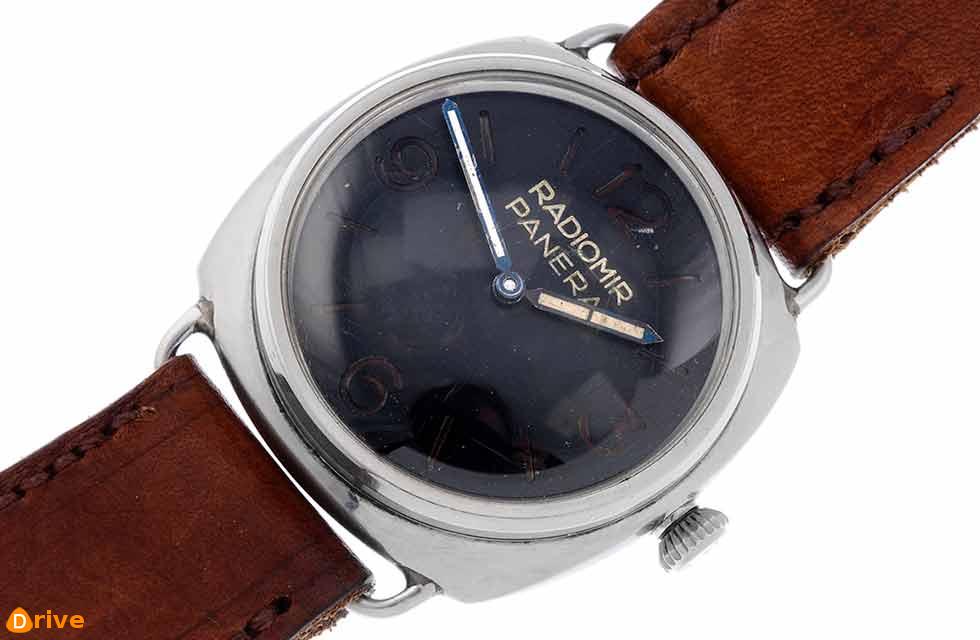From Florence to Birmingham via the bridge at Nijmegen
Chrono WORDS MARK McARTHUR-CHRISTIE
How did a couple of Italian diving watches stolen by the Germans from Florence end up, via two frogmen in Holland, on the wrists of British soldiers, finally surfacing at the same Birmingham auction house? And where are the other eight watches that should be with them?

As darkness fell on 28 September 1944, a group of 12 German Kampfschwimmer (combat frogmen) slipped into the Waal River near Nijmegen in Holland. The group was split into two teams; the larger eight-man team had the task of destroying the town’s road bridge, the smaller four-man team its rail bridge. Each wore a large, luminous Panerai watch – a 3646 Type C – originally designed for the Decima MAS, the Italian underwater commando unit. Taken by the Germans from Panerai in Florence, they were ideal for the new Kampfschwimmer unit. The watches needed to be oversized (47mm) with large, luminous, radium-filled numerals that would be clearly legible in the underwater murk. The 12-sided caseback and crown both screwed down tightly to the case, to make the watch waterproof. Rather than modern silicone rubber gaskets, they used flat lead seals malleable enough to snug down tightly against the caseback and bezel without shearing.
Each dial was labelled ‘Radiomir Panerai’, referring to both maker (Panerai) and the radium-based compound that illuminated its numbers. Later watches lost any identifying markings, perhaps because neither Panerai nor Rolex (which provided the movements) was eager for their compulsion to make watches for the Nazis to be mistaken for willingness.
The men began swimming silently towards their objective. By 0600 the rail bridge team was finally in place. They flooded their charges so that they settled on the riverbed, wrapped around the bridge piers. As the men started swimming back to their own lines, the resulting explosion took out the bridge’s middle section. The road-bridge team had a harder task, and a far more important target. Blowing the road bridge would prevent the movement of tanks, ammunition and troops. But they were seen and came under fire. In the chaos their charges only slightly damaged the bridge structure. The exhausted men hoped to rest in the shallows at the edge of the river until they got their strength back. Instead they found themselves spotted and hauled out by a 43rd (Wessex) Reconnaissance Regiment platoon that had been patrolling the riverbank.
As tended to happen, the Germans were swiftly relieved of their watches and other spoils and ended up in PoW camps for the rest of the war. It is known that the 43rd’s Captain Alfred Packer and Sergeant George H Rowson both ended up with splendid, but slightly used, Panerai 3646s, but the whereabouts of the other eight watches are still unknown.

The event was laconically recorded in the regiment’s history. ‘Patrol to brick kilns 5568 at 0800 capture 10 marines sent to mine Nijmegem [sic] Bridges. Quiet day.’ Captain Packer’s own war diary entry was: ‘Bridges blown by Germans. B Sqn captured five of the party. Swam down the Rhine from Germany in special rubber swimming suits with rubber feet like frog’s feet. Rather a clever performance on part of Jerry.’
Captain Packer’s watch is engraved with its original wearer’s name – Kampfschwimmer Kurt Kohlrusch – but Rowson, keen to keep hold of his new watch, scratched on his own name. We know the names of the ten frogmen who were captured, but – to date – Kohlrusch’s watch is the only one we can link with its wearer.
Remarkably, despite spending 75 years apart, these two watches both recently resurfaced at Birmingham auctioneer Fellows, Rowson’s selling for £52,000 in January 2018 and Packer’s making £53,000 in March this year, despite having lost its wire strap lugs. They aren’t the first 3646s to turn up, but they’re believed to be the only ones from the Nijmegen raid.
In 2016, a Cheshire man found a 3646 in a drawer while clearing his late father’s house. He had no idea of its worth (his father had bought it at a car boot sale for £10) and casually strolled into a valuation day at a local saleroom with it in his pocket. The auctioneer recalls phoning him post-sale to explain how much the car-boot find had made: ‘When I told him it sold for £46,000, he thought I had said ‘£4000 to £6000’ and I had to say it three times before he believed me.’ So two Nijmegen 3646s have surfaced, but ten Kampfschwimmer were captured, which leaves a very big question: where are the other eight? If any of your relatives fought at Arnhem, it might just be worth rummaging through a few drawers. If you find an oversized, black-dialled, tatty old watch with big numbers, you might just have a piece of history.
Thanks to military historian and Arnhem expert Scott Revell for his help with this article.





